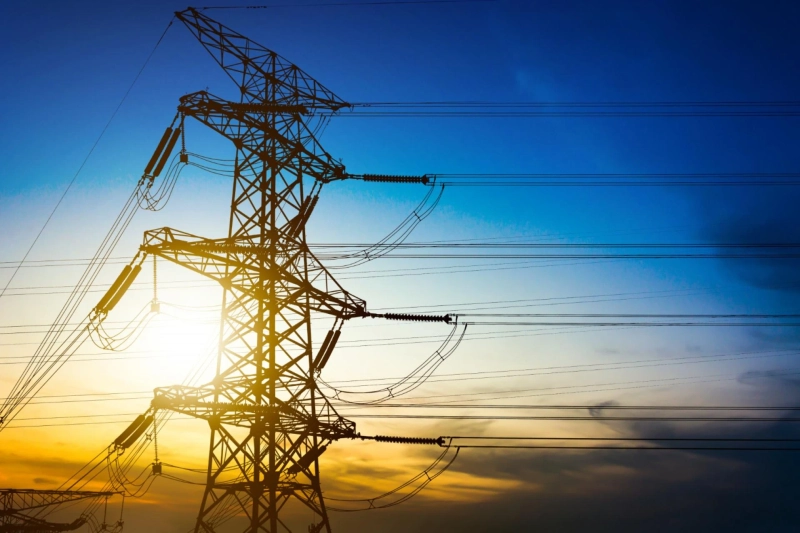Ever wondered why your electricity bill is creeping up even though your usage hasn't changed? Or why do renewable energy sources still struggle to make it to your neighborhood despite wind turbines spinning in the distance? Much of it comes down to something we rarely consider: how electricity travels.
And in that story, carbon fiber conductors are quickly becoming the unsung heroes.
Let’s walk through the wires—minus the jargon and the engineering headaches—and talk about how this quiet innovation is changing the way power flows, sustainably and efficiently.
What’s Actually Happening When Electricity Moves Across Power Lines?
Think of electricity like water running through a hose. Ideally, you want as much of it as possible reaching the end without leaking along the way, right?
Now, electricity doesn’t leak the same way water does, but it does suffer from what's called line loss.
That’s energy lost as heat as it travels long distances, especially on old or overloaded lines.
And we’re not talking minor losses either. According to the U.S. Energy Information Administration, the U.S. loses roughly 5% of the electricity it generates during transmission and distribution. That’s billions of dollars!! And an environmental cost that quietly adds up, too.
Where Do Carbon Fiber Conductors Come In?
Here’s where it gets interesting. Traditional power lines often rely on aluminum conductors reinforced with steel (known as ACSR). They’ve done the job for decades, sure—but they sag under high heat, wear out faster, and lose efficiency over time. That’s a problem when our grid is expected to carry heavier loads than ever before.
Enter carbon fiber conductors. Instead of a steel core, they use a carbon fiber composite—lightweight, incredibly strong, and far more heat-resistant.
The aluminum stays, since it’s a great electrical conductor, but now it’s wrapped around something that doesn’t buckle under pressure.
The result? Less sag, higher capacity, and—here’s the kicker—less energy lost in transmission.
How Much Efficiency Are We Really Talking About?
This isn’t about marginal improvements. We’re talking substantial gains.
In one real-world case, a utility replaced aging ACSR conductors with CTC Global’s ACCC® carbon fiber conductors across a 35-mile stretch. The upgrade doubled the current-carrying capacity, without adding a single new tower. That means more electricity, faster delivery, and lower costs over time.
Even more compelling? These upgraded lines showed reduced line losses of up to 30-40%, especially during peak loads and high-temperature conditions. That’s the kind of bump in efficiency that can support a cleaner, more reliable energy system.
Is This Just About Efficiency—Or Does It Help the Planet Too?
Glad you asked. Because yes, there's a direct climate connection.
Every kilowatt of electricity we don’t lose in transmission means less fossil fuel burned to make up the difference. That’s especially true in areas where renewables are being ramped up. Solar farms in the desert or wind farms in remote plains don’t help much if half the power evaporates before it gets to the city.
Carbon fiber conductor upgrades make it possible to deliver that clean energy without building entirely new infrastructure. And fewer new towers means fewer environmental disruptions—less deforestation, less land use, and lower visual pollution.
It’s one of those rare technical upgrades that quietly hits multiple climate goals at once.
But Is This Scalable, or Just a Fancy Niche Fix?
Let’s be real. Skepticism is healthy, especially in an industry where buzzwords often outpace real impact.
But this isn’t a science fair experiment. Advanced reconductoring using carbon fiber conductors is already being adopted across North America, South America, Europe, and parts of Asia. Utilities like National Grid, PG&E, and others are rolling out these upgrades as part of long-term modernization plans.
And the economics are there, too. A 2021 Brattle Group study estimates that reconductoring with advanced materials could double grid capacity and reduce congestion costs by billions annually. That's not small potatoes.
Why Not Just Build New Lines Instead?
Ah, the golden question. If we need more capacity, why not just build more towers and string new lines?
Simple answer: it takes years, sometimes a decade or more, just to get the permits, community buy-in, and the much-needed environmental approvals.
In contrast, reconductoring with carbon fiber conductors uses existing towers, right-of-way, and infrastructure. The transformation happens faster, with fewer headaches, and far less community disruption.
Think of it like upgrading your home’s internet by swapping the old copper cables for fiber optics; same house, much better performance.
Is There a Catch?
As with anything, it's not perfect.
Carbon fiber conductors are more expensive upfront than traditional ACSR lines. And not every aging tower can support the higher tension or technical requirements. Upgrading requires planning, skilled labor, and investment.
But over the long haul? The ROI is hard to ignore — fewer outages, lower maintenance, improved reliability, and meaningful carbon savings.
And the good news: as the demand and manufacturing scale up, prices start dropping.
Final Thoughts: Invisible Wires, Big Impact
Let’s face it—power lines aren’t exactly headline material. Most of us don’t notice them until the lights flicker.
But that’s the beauty of carbon fiber conductors. They’re making things better behind the scenes. Stronger grids. Cleaner power. Smarter upgrades.
As we march toward a future of electric vehicles, distributed energy, and climate accountability, the wires overhead matter more than ever. And while carbon fiber may have started in spaceships and Formula 1 cars, it turns out it’s just as valuable in something as mundane—and vital—as our power lines.
Because sometimes the smartest solutions aren’t flashy. They’re just quietly, relentlessly better.



